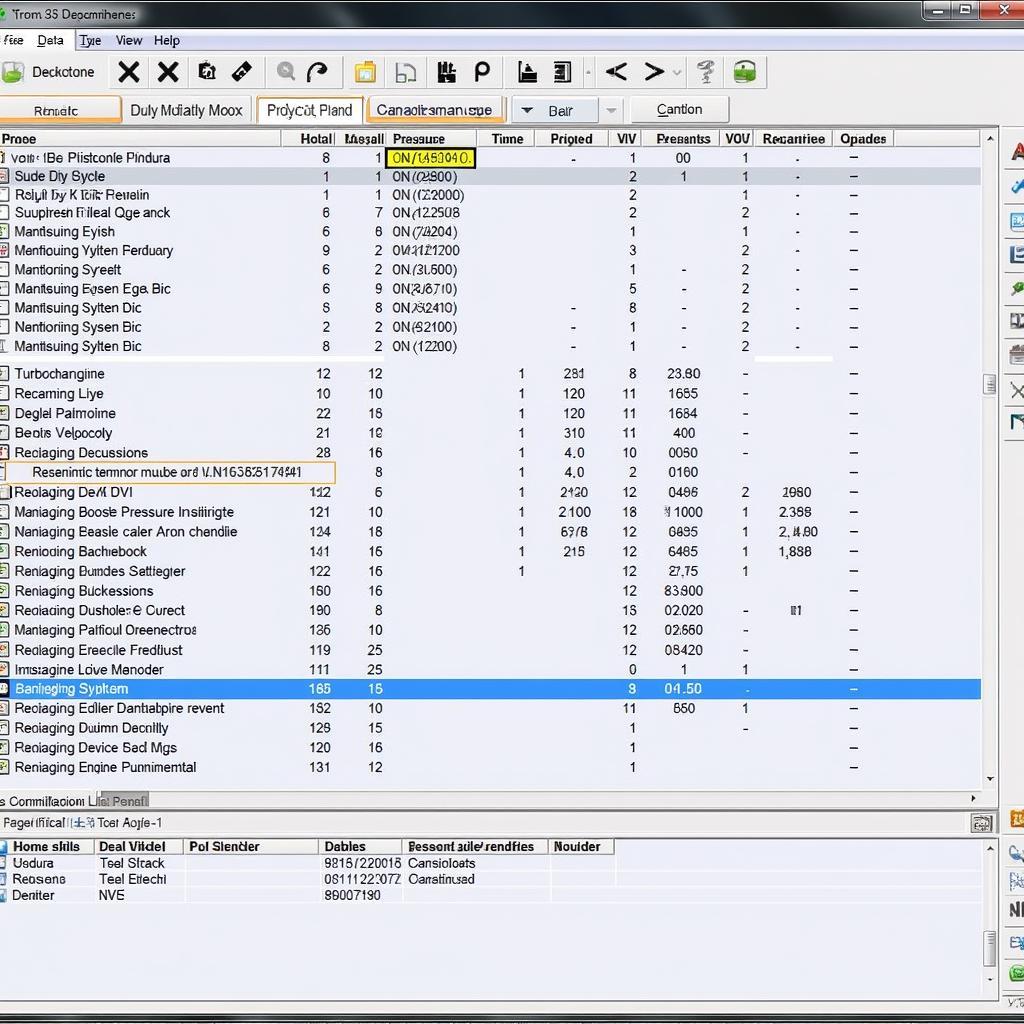Your cart is currently empty!

Mastering VCDS TDI Turbo Diagnostics and Repairs
VCDS and TDI turbo issues go hand in hand. Understanding how to use VCDS (VAG-COM Diagnostic System) is crucial for diagnosing and addressing turbocharger problems in your TDI engine. This article provides a comprehensive guide for car owners, repair shops, and technicians on using VCDS effectively for TDI turbo diagnostics. We’ll cover everything from understanding basic measuring blocks to interpreting fault codes and performing output tests.
After the introduction, we’ll delve into the nitty-gritty of VCDS TDI Turbo diagnostics. Learning how to navigate this software can save you significant time and money. n75 vw passat tdi test vcds provides valuable information on testing the N75 valve, a key component in turbo control.
Understanding the Importance of VCDS for TDI Turbo Diagnostics
VCDS is an indispensable tool for anyone working with TDI engines. It allows you to access the car’s control modules, read fault codes, monitor live data, and perform various tests, including those specifically related to the turbocharger system. Without VCDS, diagnosing turbo issues can be a frustrating guessing game. So, if you’re serious about TDI maintenance and repair, VCDS is your best friend.
 VCDS TDI Turbo Diagnostics Screen
VCDS TDI Turbo Diagnostics Screen
Common TDI Turbo Issues Diagnosed with VCDS
Several common TDI turbo problems can be diagnosed using VCDS. These include overboost or underboost conditions, sticking vanes in variable geometry turbos (VGTs), and faulty N75 valves. VCDS allows you to monitor boost pressure, N75 duty cycle, and other vital parameters to pinpoint the root cause of the problem.
vcds tdi measuring blocks provides a good overview of using measuring blocks for diagnostics.
Step-by-Step Guide to Diagnosing TDI Turbo Issues with VCDS
- Connect VCDS to your car’s OBD-II port. Ensure the ignition is on.
- Select the engine control module.
- Go to “Measuring Blocks.”
- Select the appropriate measuring blocks for turbo diagnostics. These typically include boost pressure (actual and requested), N75 duty cycle, and MAF sensor readings.
- Log the data while driving the car. This allows you to observe the turbo’s behavior under different load conditions.
- Analyze the logged data. Look for discrepancies between actual and requested boost, erratic N75 duty cycle, or other unusual readings.
- Check for fault codes. VCDS can retrieve and clear fault codes related to the turbo system.
 TDI Turbo Measuring Blocks in VCDS
TDI Turbo Measuring Blocks in VCDS
“Regularly checking your TDI’s turbo system with VCDS can help you catch potential problems early on,” says John Smith, a seasoned automotive engineer specializing in TDI engines.
Advanced VCDS Techniques for TDI Turbo Diagnostics
VCDS offers more advanced features for experienced users, such as output tests. These tests allow you to actuate various components of the turbo system, like the N75 valve or the VGT actuator, to verify their functionality. However, use these features cautiously, as incorrect usage can potentially damage the system. tdi vcds fuel trim might seem unrelated, but understanding fuel trim can provide further insights into the overall engine performance, which is linked to turbo operation.
“Understanding how the entire system interacts is crucial for effective diagnostics. Don’t just focus on the turbo; consider the bigger picture,” adds Jane Doe, another experienced TDI specialist.
Interpreting VCDS Data and Fault Codes
Properly interpreting the data and fault codes retrieved by VCDS is essential for accurate diagnostics. Understanding what each parameter represents and how it relates to the turbo system is crucial. Consult reliable resources like factory repair manuals or online forums for detailed information on specific fault codes and their possible causes. vcds 2010 volkswagen touareg tdi demonstrates the application of VCDS on a specific vehicle model, showcasing the tailored diagnostic approach.
 VCDS Fault Codes for TDI Turbo
VCDS Fault Codes for TDI Turbo
Conclusion
Mastering VCDS for TDI turbo diagnostics empowers you to effectively troubleshoot and resolve turbo-related issues. Regularly monitoring your TDI’s turbo system with VCDS can prevent costly repairs down the road. Remember to analyze data carefully and consult reliable resources for accurate interpretations. For further assistance or inquiries, connect with us at vcdstool, +1 (641) 206-8880 and our email address: vcdstool@gmail.com, located at 6719 W 70th Ave, Arvada, CO 80003, USA.
 VCDS Cable Connected to a Car’s OBD-II Port
VCDS Cable Connected to a Car’s OBD-II Port
FAQ
-
What is VCDS?
VCDS is a diagnostic software for VAG (Volkswagen Audi Group) vehicles. -
Why is VCDS important for TDI turbo diagnostics?
VCDS allows access to engine data crucial for identifying turbo issues. -
What are common TDI turbo problems?
Common problems include overboost, underboost, and faulty N75 valves. -
How can I diagnose a TDI turbo with VCDS?
By monitoring parameters like boost pressure and N75 duty cycle. -
Where can I find more information on VCDS and TDI turbos?
Online forums and factory repair manuals are valuable resources. -
What are measuring blocks in VCDS?
Measuring blocks display real-time data from the engine control unit. -
What are output tests in VCDS?
Output tests allow you to control individual components for testing.
by
Tags:
Leave a Reply